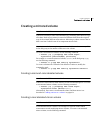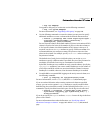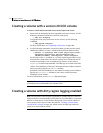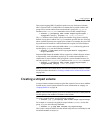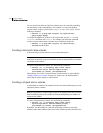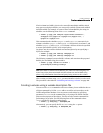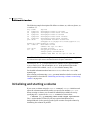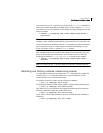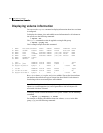
257Creating volumes
Creating tagged volumes
RAID-5 logs can be concatenated or striped plexes, and each RAID-5 log
associated with a RAID-5 volume has a complete copy of the logging information
for the volume. To support concurrent access to the RAID-5 array, the log
should be several times the stripe size of the RAID-5 plex.
It is suggested that you configure a minimum of two RAID-5 log plexes for each
RAID-5 volume. These log plexes should be located on different disks. Having
two RAID-5 log plexes for each RAID-5 volume protects against the loss of
logging information due to the failure of a single disk.
If you use ordered allocation when creating a RAID-5 volume on specified
storage, you must use the
logdisk attribute to specify on which disks the RAID-
5 log plexes should be created. Use the following form of the
vxassist command
to specify the disks from which space for the logs is to be allocated:
# vxassist [-b] [-g diskgroup] -o ordered make volume length \
layout=raid5 [ncol=number_columns] [nlog=number] \
[loglen=log_length] logdisk=disk[,disk,...] storage_attributes
For example, the following command creates a 3-column RAID-5 volume with
the default stripe unit size on disks mydg04, mydg05 and mydg06. It also creates
two RAID-5 logs on disks mydg07 and mydg08.
# vxassist -b -g mydg -o ordered make volraid 10g layout=raid5 \
ncol=3 nlog=2 logdisk=mydg07,mydg08 mydg04 mydg05 mydg06
Note: The number of logs must equal the number of disks specified to logdisk.
For more information about ordered allocation, see “Specifying ordered
allocation of storage to volumes” on page 245 and the vxassist(1M) manual
page.
If you need to add more logs to a RAID-5 volume at a later date, follow the
procedure described in “Adding a RAID-5 log” on page 283.
Creating tagged volumes
Volume tags are used to implement the Dynamic Storage Tiering feature of the
Storage Foundation software. For more information about this feature, see the
Veritas File System Administrator’s Guide.
You can use the
tag attribute with the vxassist make command to set a named
tag and optional tag value on a volume, for example:
# vxassist -b -g mydg make volmir 5g layout=mirror tag=mirvol=5g
To list the tags that are associated with a volume, use this command:
# vxassist [-g diskgroup] listtag volume
To list the volumes that have a specified tag name, use this command:
# vxassist [-g diskgroup] list tag=tagname volume



